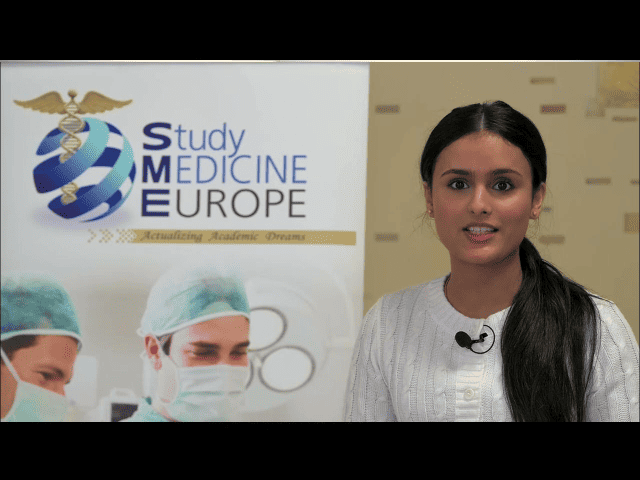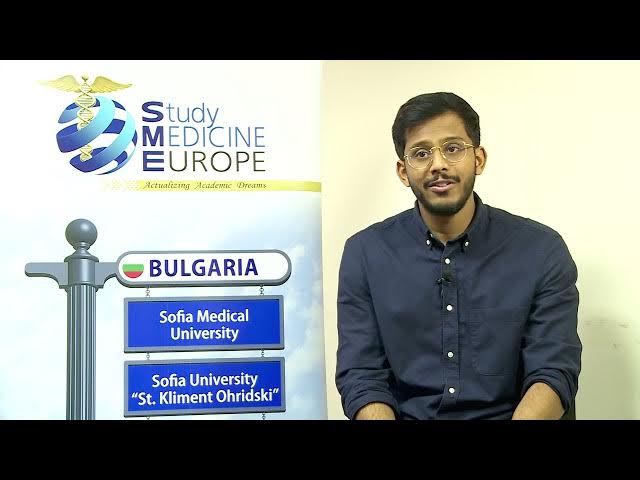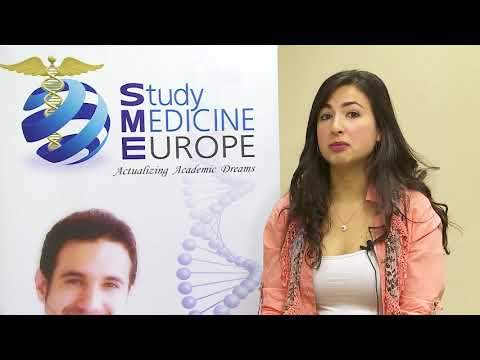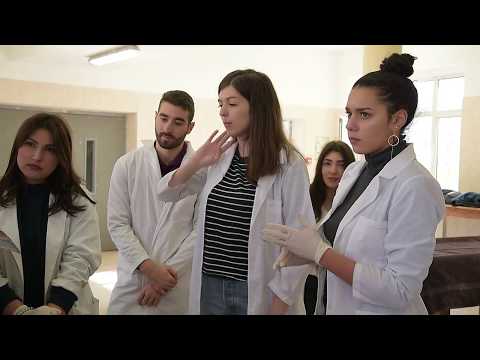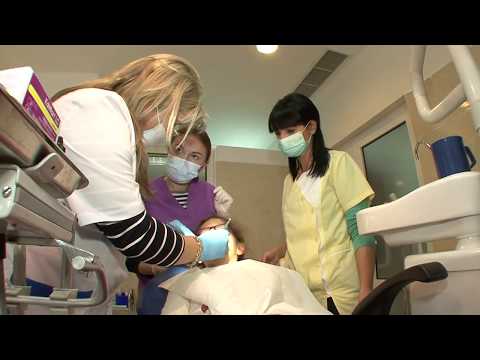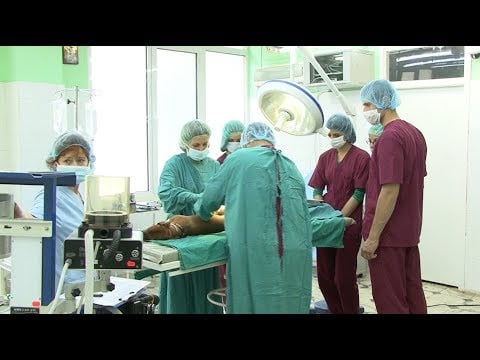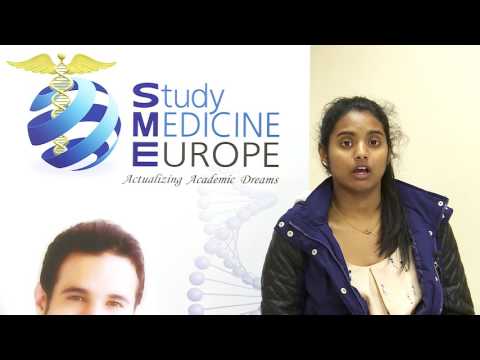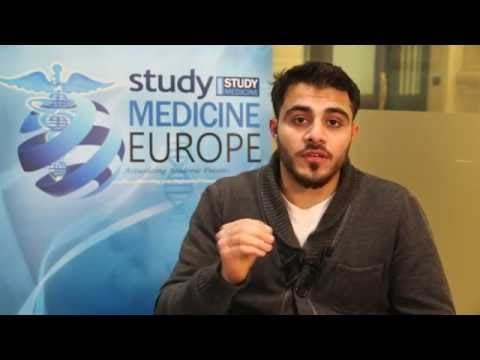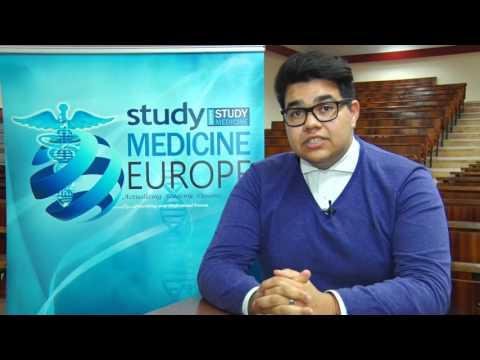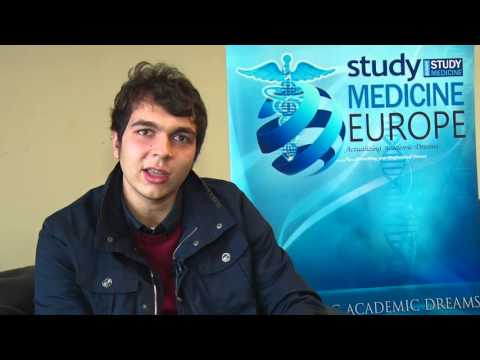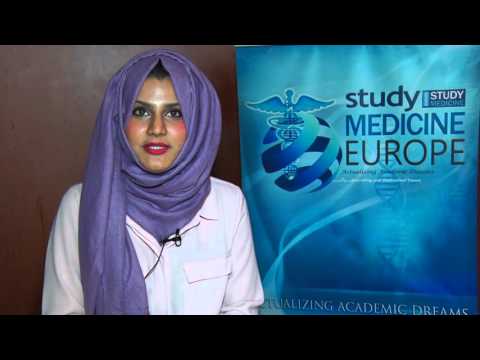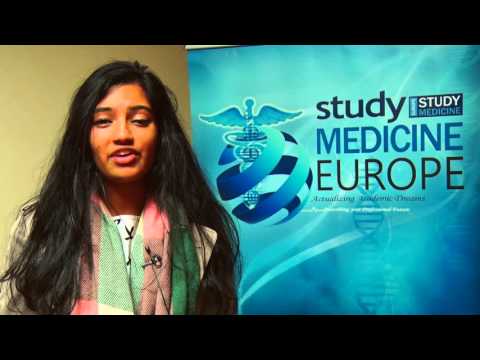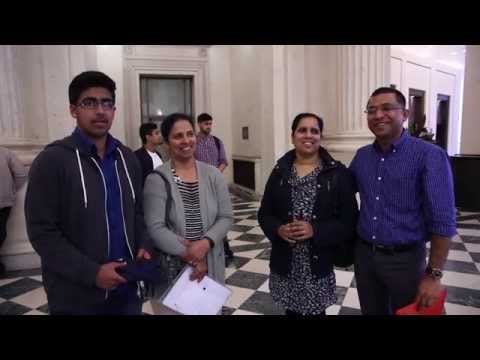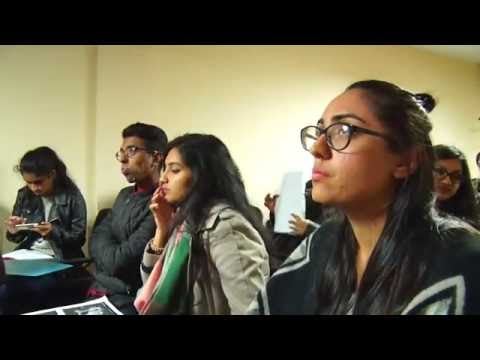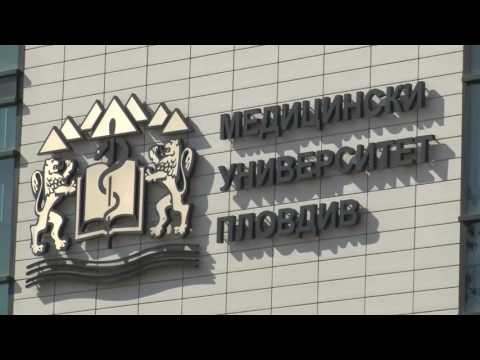Saint Lucia Medicine School — Quick Facts
Admission
No entry exams
Tuition fees
$6,950/year
Undergraduate Entry
5.5 Years
Intake
January, May, September
Funding
Not Available
Graduate Entry
4 Years
+ Why Should you Study Medicine in Saint Lucia?
Why Should you Study Medicine in Saint Lucia?
- Saint Lucia is a top region for medicine programmes both in North America and worldwide, attracting international students for medical training.
- Accredited universities offer affordable undergraduate and graduate programmes taught in English that qualify students with an international Doctor of Medicine (MD) degree that’s recognised by the UK General Medical Council (GMC).
- Not only is medical school in Saint Lucia founded on international healthcare principles but also an inclusive and peaceful experi-ence.
- Saint Lucia’s universities are new and safe with cutting-edge learning facilities, experienced local and international faculty, and ECFMG listing.
- Furthermore, these universities’ emphasise quality learning through administration support for students, personalised learning op-tions, and positive living and community services.
- Altogether Saint Lucia is increasingly being recognised for their local and international partnerships that give students dynamic clinical training opportunities.
- Combined with each university’s curriculum being developed in line with U.S. and UK programmes, students graduate with com-prehensive theoretical and clinical training that prepares them for postgraduate training, programs, and specialisation.
- These benefits go hand-in-hand with competitive tuition fees starting at $6,950 per year — almost 40% less than UK medical pro-grammes.
- Additionally lower living costs than the UK, the U.S., Canada, and Australia makes it an excellent choice for medical school.
- Throughout their medical school training, students are supported by academic professors, clinical faculty including doctors and nurses, and on-campus counsellors which helps them thrive while studying a rigorous undergraduate or graduate programme.
- Overall Saint Lucia is quickly becoming one of the most-popular choices for medical training as it’s highly professional and clini-cal training is a core part of programmes, plus the learning setting is relaxed and friendly to international students due to communi-ty-focused university values.
+ Where Is the Best Medical University in Saint Lucia?
Where Is the Best Medical University in Saint Lucia?
- Saint Lucia universities are well-established institutions for medical training in the Caribbean sub-region of North America.
- Commonwealth University College of Medicine (CUCOM) has led the modern era of medical training in Saint Lucia; first founded in 2005, it’s since matured as an institution and is now one of the country’s foremost research, education, and training universities.
- The accredited university designs its programmes on an integrated delivery model, teaching medical students through its innovative active learning curriculum.
- While studying at CUCOM, students learn strategically through technology and community-focused teaching that prepares them for patient-centric global healthcare.
- Subsequently, CUCOM is a favourite education destination for international students applying to study medicine in English in North America.
- Annual tuition fees for all programmes start at $6,950 per year and CUCOM offers two medicine programmes: 5.5-Year Under-graduate Medicine Programme and 4-Year Graduate Medicine Programme.
- The admissions process is very competitive, requiring a professional application in order to be offered a place as there are no entry exams and MCAT isn’t required to apply; graduate programme applicants must hold a science-related Bachelor’s Degree such as a Bachelor of Science (BS).
- Both the undergraduate and graduate programmes are developed to progressively build student medical knowledge, skills, and aptitudes from Basic Sciences theory through to Clinical Sciences hospital and specialist rotations.
- Once students graduate, they hold a Doctor of Medicine (MD) degree and their clinical training prepares them for international li-censing including with the UK GMC.
- During all phases of their programmes, students are led by experienced faculty who are consistently available to guide prospective physicians.
- CUCOM students complete clinical training in Saint Lucia’s hospitals and clinics, and they also have international clinical training options in the U.S. at clinical sites in Atlanta, Chicago, and Washington, D.C.
- The university’s campus facilities are ideal for international students with a culturally diverse community, options for student dorms or comfortable and affordable off-campus housing, and a range of extracurricular services for sport, lifestyle, and network-ing.
- As a next-generation medical school, CUCOM is a logical choice for a UK and U.S. training standards with new equipment and facilities at a research-focused institution.
+ How Much Does it Cost to Study Medicine in Saint Lucia?
How Much Does it Cost to Study Medicine in Saint Lucia?
- Without question, Saint Lucia is a savvy financial choice for international students seeking a renowned school that’s cost-effective.
- Whether it’s tuition fees, programme standards, or quality of life, the costs of medical school in Saint Lucia are qualitatively and quantitatively worth it.
- Compared to leading medical schools in the U.S. and the UK, tuition fees are much lower and day-to-day living costs are propor-tionally lower (based on Numbeo data).
- Even so, Saint Lucia is still an island nation so certain prices are inflated, like imported goods, brands, and produce.
- Using a per diem comparison, local infrastructure and services are good for medical students who can also access healthcare, budget accommodation, and transport through their university.
- When it comes to managing medical school costs, it’s therefore essential for students to manage their finances wisely and minimise tourist-oriented spending like restaurants and luxury entertainment.
| Programme | Programme Starts | Annual Fees () |
|---|---|---|
| Medicine | January, May & September | 6,950/year |
| Living Costs | Saint Lucia Monthly () | UK Monthly () | Saint Lucia Annually () | UK Annually () |
|---|---|---|---|---|
| Rent | 400–600 | 760–2,100 | 4,850 –7,200 | 9,120 –25,200 |
| Food | 80–120 | 220–440 | 960–1,440 | 2,640–5,280 |
| Utility Bills (Electricity, Gas & Water) | 100 | 340 | 1200 | 4,080 |
| Internet | 45 | 40 | 540 | 480 |
| Transportation | 30 | 100 | 360 | 1,200 |
| Total | 655–895 | 1,460–3,020 | 7,860–10,740 | 17,520–36,240 |
+ How Long is Medical School in Saint Lucia?
How Long is Medical School in Saint Lucia?
- Medical school duration in Saint Lucia is based on the course:
- Undergraduate Medicine is a 5.5-Year Programme
- Graduate Medicine is a 4-Year Programme
- Regardless of programmes, every university’s curriculum is developed in line with U.S. medical schools covering Basic and Clinical Sciences.
- The programme structure is sequential to build student knowledge with each consecutive module; undergraduate programmes begin with one year of preclinical studies to prepare students for the rigorous medical school modules.
- All universities teach through conceptual study and introducing clinical exposure as soon as possible which achieves rigorous demonstration of theory.
-
Commonwealth University College of Medicine (CUCOM) students have the following structure for the two programmes:
- For the 5.5-Year Undergraduate programme there are three learning phases:
- Year One comprises the Premedical Program of study
- Years Two to Three comprises the Pre-Clinical Program with study of Basic Sciences
- Years Four to Five comprises the Clinical Science Program with rotations and training modules
- For the 4-Year Graduate programme there are two learning phases:
- Years One to Two comprises the Pre-Clinical Program with study of Basic Sciences
- Years Three to Four comprises the Clinical Science Program with rotations and training modules
- For the 5.5-Year Undergraduate programme there are three learning phases:
- Additionally students receive critical analysis and research training, and throughout their programme students work with a mentor for each of the three programme areas: Basic Sciences, Clinical Sciences, and Research.
- Clinical training is a cornerstone of the CUCOM programme with opportunities for clinical rotations in local and international clin-ics through partnerships in the U.S.
+ What’s it like to be a Medical Student Living in Saint Lucia?
What’s it like to be a Medical Student Living in Saint Lucia?
- Studying and living in the West Indies of North America is a singular study abroad experience in a culturally rich yet quite un-touched location.
- Saint Lucia is a well-loved destination for tourists and now for international students experiencing its charming tropical attractions.
- It has the modern amenities of a small, independent Commonwealth country with a diverse, small local population known for making everyone welcome and comfortable.
- English is the official language in addition to a French Creole-speaking community which makes it easy for international students to connect with local people and adjust to their new home.
- Whether students are living in the capital of Castries or one of the districts like Gros Islet, they’ll get to know the country well as it’s relatively small at 617 sq km and it has a population of around 185,000 people.
- Saint Lucia is part of the Organisation of Eastern Caribbean States, an inter-governmental union for countries in the region, and its administrative body is in the capital city which lends an extra layer of local organisational infrastructure.
- Life in Saint Lucia is progressive, serene, easygoing, and diverse with Caribbean culture mixed with traditional island influences in art and practices, festivals, food, and sport.
- The entire island that makes up the country is stunningly beautiful so it’s like studying in paradise — a pleasant year-round cli-mate, mountainous and volcanic landscapes, and surrounded almost completely by the Caribbean Sea with the Atlantic Ocean to the south.
- Beyond enjoying the tropical outdoors with diving, sailing, hiking, and cricket, it’s pleasant to be immersed in Saint Lucia’s dis-tinctive West Indian cuisine and follow the annual festival calendar with feasts, dancing, and athletics.
- Most universities also provide high-level infrastructure support for students so they can easily navigate living in Saint Lucia and access any special services they may need.
+ How to be Safe and Healthy in Saint Lucia?
How to be Safe and Healthy in Saint Lucia?
- Saint Lucia has all essential services and infrastructure for students to maintain their health and wellbeing.
- According to all relevant metrics, both international students and visitors can easily access a range of hospitals on the island in ad-dition to medical care clinics.
- Public healthcare schemes may cover international students though private health insurance is available and affordable so this is also recommended.
- Pharmacies for medications and drugstores are also within walking distance of universities, while universities can provide some as-sistance on-campus.
- Universities also recommend being up-to-date with immunisations in their home country as part of their passport for student visas and using insect repellant according to guidelines.
- Water is safe and clean to drink, readily available, and dorms are comfortable with self-catering available via common kitchens or there’s completely private rentals for students to live independently.
- Local grocery stores and markets are widely accessible so it’s affordable and simple to cook healthy, nourishing meals.
- Saint Lucia universities prioritise student safety through round-the-clock security and the country’s greater safety rating is very high.
- Even though Saint Lucia is a safe country for residents, expats, immigrants, students, and visitors, standard, low-risk practices are always recommended.
- Every university’s administration encourage students to reach out at any time with their concerns, health needs via on-campus medical clinics, and there are counselling services available for students needing personalised support.
+ How do you get to Saint Lucia?
How do you get to Saint Lucia?
- Saint Lucia fits the bill for easy travel for international students from the UK, U.S., Canada, and greater Europe.
- Hewanorra International Airport (UVF) operates direct connections from the UK and the U.S. East Coast making life planning ef-fortless.
- From the UK, direct flights are just over 8 hours from London Heathrow; from North America, direct flights operate from the U.S. East Coast including New York and Atlanta, and from Toronto.
- These major East Coast U.S. and Canadian airports all operate daily connections with other countries and domestic routes so stu-dents can book itineraries via leading airlines including British Airways, American Airlines, Virgin Atlantic, and Delta Air Lines that fly into Saint Lucia.
- Then, it’s a one-hour taxi from UVF to Castries in Northern Saint Lucia for around $50.
- Once students are living in Saint Lucia, there’s flights to South America and smaller airlines operate routes around the Caribbean making short getaways a pleasant part of life.
- International ferries also service the region so students can explore surrounding countries like Martinique, Dominica, and Guade-loupe.
+ Is Saint Lucia an Expensive Place to Study?
Is Saint Lucia an Expensive Place to Study?
- When evaluating exact living costs for Saint Lucia, for the most part it’s not an expensive place to study.
- Above all, annual tuition fees are significantly lower than the UK and among the lowest in the Caribbean sub-region.
- Equally living costs including rent, groceries, transport, and healthcare are all much lower than the UK, Western Europe, the U.S., and Canada.
- As is typical for Caribbean countries and island nations in general, certain costs like luxury items requiring import are higher.
- Additionally, Saint Lucia is a popular tourist destination and attractions in the capital are somewhat inflated as well.
- Despite lower tuition and living costs, taking a practical approach to spending is critical to allow for budgeting to travel home and to enjoy a pleasant yet well-managed lifestyle.
Watch Our Videos
Real Success StoriesOpen DaysEntry ExamsNetworking Events
Reviews
+ 2023
2023
+ 2022
2022
+ 2021
2021
+ 2020
2020
+ 2019
2019
+ 2018
2018
+ 2017
2017
+ 2016
2016
+ 2015
2015
+ 2014
2014




















